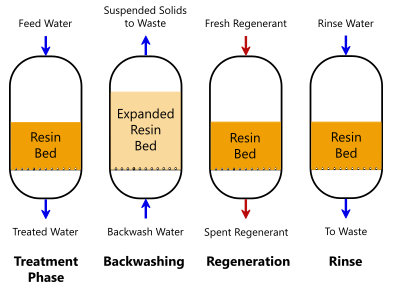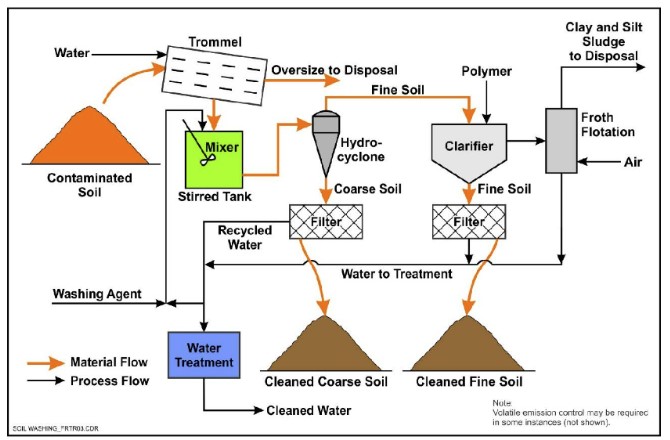M270 PFAS Treatment for Rapid Removal of Contaminants
Wiki Article
Your Overview to PFAS Therapy Technologies and Perks
The frequency of PFAS contamination in water resources requires a comprehensive understanding of offered treatment innovations. Each innovation not just targets certain PFAS compounds however also plays a crucial duty in enhancing total water high quality and safeguarding ecological honesty.Comprehending PFAS Contamination
Recognizing PFAS contamination is important for addressing its prevalent influence on ecological and human wellness (m270 pfas treatment). Per- and polyfluoroalkyl materials (PFAS) are a group of synthetic chemicals widely used in numerous commercial and customer products because of their water- and grease-resistant buildings. Commonly located in firefighting foams, non-stick cookware, and water-repellent textiles, PFAS have actually gotten in the environment through manufacturing procedures, wastewater discharges, and seeping from garbage dumpsWhen released, these substances continue in the atmosphere, resulting in widespread contamination of soil and water sources. Their one-of-a-kind chemical framework, defined by strong carbon-fluorine bonds, renders them immune to deterioration, leading to a phenomenon referred to as "for life chemicals." PFAS can accumulate in the human body and the food chain, possibly triggering unfavorable wellness impacts, consisting of immune system interruption, developmental concerns, and a boosted threat of specific cancers.
Governing companies and wellness organizations are significantly acknowledging the significance of PFAS contamination, triggering efforts to keep an eye on, assess, and alleviate its effects. Comprehending the pathways of PFAS contamination is crucial for notifying public policy and establishing reliable techniques to shield both ecological and human wellness.
Summary of Therapy Technologies
Various treatment technologies have been established to resolve the obstacles postured by PFAS contamination in water and soil. These modern technologies can be broadly categorized right into numerous categories, each with its special mechanisms and effectiveness in getting rid of PFAS substances.One noticeable approach is ion exchange, which makes use of resin materials to capture and get rid of PFAS from polluted water. This approach is especially efficient for short-chain PFAS and can attain considerable decreases in focus degrees. One more modern technology, progressed oxidation procedures (AOPs), uses solid oxidants and ultraviolet light to damage down PFAS right into much less hazardous compounds. AOPs are appropriate for treating a vast array of PFAS substances however might need cautious optimization to take full advantage of efficiency.

Activated Carbon Filtering
Turned on carbon purification is an extensively utilized method for the removal of PFAS from contaminated water, known for its capability to adsorb a broad array of organic substances. This technology employs activated carbon, a highly permeable product with a comprehensive surface, which assists in the binding of PFAS particles with physical adsorption. The efficiency of triggered carbon in eliminating PFAS is affected by a number of aspects, consisting of the kind of carbon used, the get in touch with time, and the focus of PFAS in the water.Among the benefits of triggered carbon filtration is its adaptability; it can be executed in different configurations, such as granular turned on carbon (GAC) systems or powdered triggered carbon (PAC) systems. GAC systems are generally used in larger-scale applications, while special-interest group can be used in smaller or short-lived arrangements. The innovation is fairly very easy to run and preserve, making it obtainable for lots of water therapy centers.

Ion Exchange Equipment
Ion exchange systems stand for another effective technique for the removal of PFAS from polluted water, matching techniques like activated carbon filtration. These systems operate the principle of trading ions in the water with ions held on a resin material. Ion exchange materials can be especially developed to target the negatively charged PFAS compounds, properly catching them and allowing cleaner water to go through.Among the key benefits of ion exchange systems is their ability to get rid of a wide variety of PFAS, including both long-chain and short-chain variations. This flexibility makes them appropriate for numerous applications, ranging from local water treatment to commercial procedures. Furthermore, ion exchange systems can typically accomplish lower discovery restrictions for PFAS contrasted to a few other treatment methods, thus enhancing water top quality.
However, it is important to monitor and handle the regrowth of ion exchange media, as the efficiency can decline with time due to saturation. Proper upkeep and replacement of the resin are vital for maintaining the system's efficiency. Overall, ion exchange systems offer a trusted and effective solution for PFAS elimination, adding considerably to risk-free alcohol consumption water standards and environmental management.
Advanced Oxidation Processes
Advanced Oxidation Processes (AOPs) make use of effective oxidants to successfully deteriorate PFAS compounds in infected water. These cutting-edge therapy approaches create highly reactive varieties, such as hydroxyl radicals, that can damage down complex PFAS molecules into much less damaging by-products. m270 pfas treatment. AOPs commonly utilize combinations of ultraviolet (UV) light, ozone, hydrogen peroxide, or Fenton's reagent, enhancing the oxidation possibility and improving deterioration effectivenessThe primary advantage of AOPs depends on their capability to target a broad variety of PFAS compounds, consisting of both long-chain and short-chain variations. This versatility is important, as PFAS contamination typically involves blends of different compounds with differing chemical structures. AOPs can be incorporated into existing water therapy systems, making them a useful solution for many communities and markets.
Nevertheless, the application of AOPs can be resource-intensive, needing careful factor to consider of functional costs and energy consumption. Additionally, while AOPs are reliable in damaging down PFAS, they may not entirely get rid of all by-products, requiring more treatment steps - m270 pfas treatment. On the whole, AOPs stand for a promising avenue for attending to PFAS contamination, adding pfas management to cleaner water resources and enhanced public wellness security

Final Thought
To conclude, addressing PFAS contamination calls for a thorough understanding of readily available treatment modern technologies. Turned on carbon filtering, ion exchange systems, and advanced oxidation processes each present one-of-a-kind benefits for successfully eliminating these harmful substances from water sources. By picking the ideal technology, neighborhoods can enhance water high quality, secure public health and wellness, and alleviate the environmental risks connected with PFAS direct exposure. Continued research and implementation of these approaches are crucial for efficient administration of PFAS contamination in impacted locations.Report this wiki page